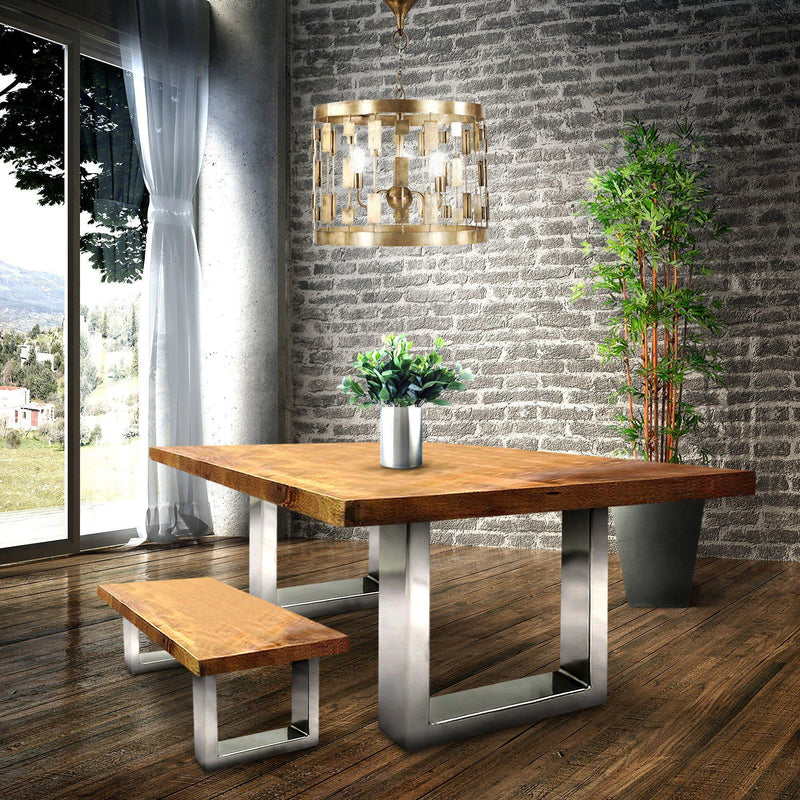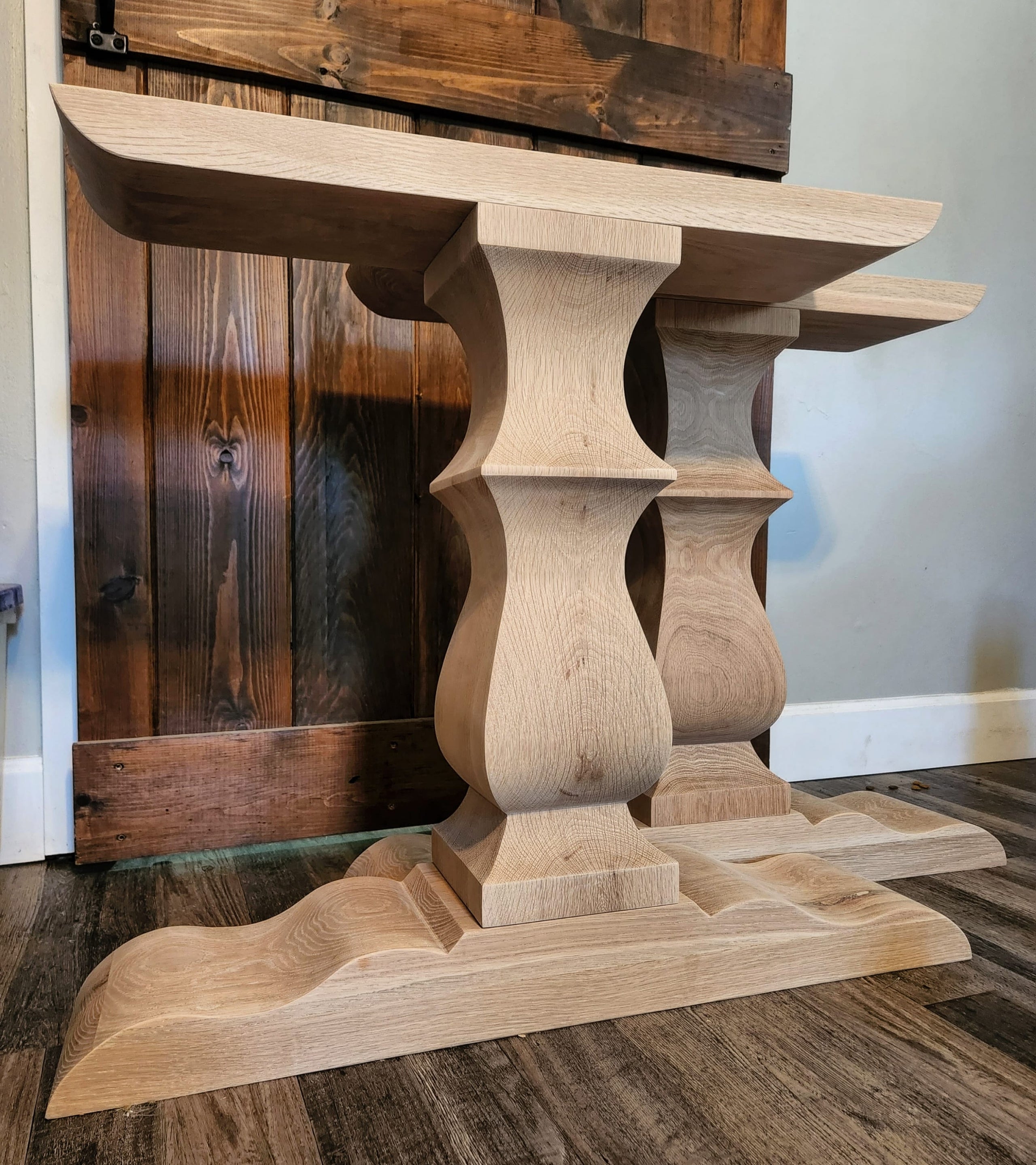Tips for Installing Dining Room Table Legs for a Modern Look
From Conventional to Modern: Discover the Perfect Dining-room Table Legs for Your Design
The selection of dining-room table legs plays a pivotal function in defining the overall personality of your area, connecting the space in between standard craftsmanship and modern-day appearances. While timeless designs such as cabriole and transformed legs evoke a sense of ageless class, contemporary styles like barrette and geometric choices provide a chance for striking visual interest. Evaluating the ideal balance in between these designs requires a nuanced understanding of your existing design and individual taste. As you consider these components, the inquiry remains: just how can you effortlessly incorporate these diverse leg designs to develop an unified dining experience?
Recognizing Table Leg Styles
The selection of eating room table leg designs can significantly affect both the looks and functionality of the area. Each leg design contributes special aesthetic elements and useful attributes, catering to varied style choices and usage requirements. Comprehending these designs is critical for picking the ideal table that lines up with your total interior decoration vision.
As an example, conical legs supply a clean, classic appearance that can enhance a space's sophistication, while pedestal bases give stability and optimize legroom, making them excellent for smaller spaces. Hairpin legs, a trademark of mid-century modern-day style, present a commercial panache, enabling a ventilated, open feeling. Trestle legs stimulate rustic charm, giving robust assistance and a feeling of timelessness.
Moreover, the choice of materials plays a substantial role. Wooden legs can bring heat and texture, whereas steel alternatives frequently communicate a streamlined, contemporary vibe. Eventually, recognizing table leg styles is essential for producing a cohesive dining location that mirrors individual style while guaranteeing functionality and comfort. By thoughtfully thinking about these aspects, you can enhance both the aesthetic and useful appeal of your dining area.
Conventional Table Leg Options
When choosing dining room table legs, typical alternatives typically personify classic style and craftsmanship. These styles show a rich heritage and a commitment to top quality, making them optimal for those that appreciate timeless appearances.
One of one of the most renowned conventional leg styles is the cabriole leg, identified by its elegant curved form. This design typically includes decorative carvings and is most frequently located in Queen Anne and Chippendale furniture. One more popular option is the turned leg, which boasts a collection of smooth, rounded forms that give a traditional look while keeping stability.
Moreover, the straight leg, while simple, supplies a strong and basic framework that can blend flawlessly with a selection of tabletop designs. For those attracted to ornate outlining, claw-and-ball feet legs stimulate a feeling of majesty and can function as a sensational prime focus in any dining space.
Last but not least, stand bases, although not purely legs, supply an alternate standard option that permits sufficient legroom and can be beautifully carved. Each of these typical leg styles adds to the general ambiance of an eating room, marrying feature with visual allure.

Modern Table Leg Designs
Modern table leg styles offer a varied range of designs that stress tidy lines and ingenious products. These styles often prioritize performance while acting as striking centerpieces within a dining area. Minimalist appearances prevail, with legs crafted from products such as metal, glass, and engineered wood, which add to a ventilated and modern feel.
One prominent style is the hairpin leg, characterized by its slim, conical framework that offers security without frustrating the table top (dining room table legs). This design is usually located in mid-century modern-day furniture and can easily complement numerous eating table shapes. One more pattern is the use of geometric shapes, where legs might handle angular or asymmetrical kinds, including aesthetic interest and a touch of creativity

Mixing Designs for Unique Rooms
Frequently, homeowners seek to produce one-of-a-kind eating areas that mirror their individual design by blending various layout elements. This method allows for the incorporation of diverse aesthetic appeals, resulting in a harmonious yet unique setting. Matching a rustic wood table with sleek, modern metal legs can create an eye-catching comparison that raises the area's navigate to this website overall appeal.
Additionally, integrating vintage table legs with modern table tops can evoke a sense of history while keeping a contemporary sensibility. Such combinations not just showcase private preference yet additionally motivate creativity, enabling homeowners to curate an area that really feels both individual and inviting.
Color plays an essential duty in this mixing process; choosing table legs go to this website that match or comparison with the existing color design can improve aesthetic interest. Whitewashed legs can soften the daring of a dark table surface area, creating a well balanced aesthetic.
Tips for Picking the Right Legs
Picking the right table legs is necessary for achieving both performance and aesthetic allure in your eating space. Begin by taking into consideration the total style of your area. Typical settings gain from legs that feature intricate makings or turned layouts, while modern areas may require smooth, minimalist styles.
Following, examine the height and stability of the legs. dining room table legs. Standard table vary between 28 to 30 inches in height, so make certain the legs complement this dimension for comfort. In addition, durable products, such as hardwood or metal, can improve security and longevity
Assess the leg shape too-- alternatives consist of directly, tapered, or stand designs. Straight legs use a traditional look, while tapered legs can include a touch of elegance. Pedestal bases supply ample legroom and are optimal for smaller sized areas.
Conclusion
In summary, selecting the ideal eating area table legs needs careful consideration of both conventional and contemporary styles. Standard choices such as cabriole and transformed legs provide ageless sophistication, while modern-day styles like barrette and geometric forms supply a modern touch. By harmonizing leg style, height, and product with the total décor, a natural and inviting environment can be accomplished. Eventually, the chosen table legs ought to mirror the wanted visual, enhancing the dining experience within the area.
The variety of eating room table leg visit our website designs can considerably influence both the visual appeals and performance of the area. Inevitably, recognizing table leg designs is crucial for creating a cohesive eating location that reflects personal style while making sure usefulness and comfort.One of the most famous typical leg styles is the cabriole leg, characterized by its stylish bent form. Straight legs use a traditional appearance, while conical legs can include a touch of style.In summary, picking the excellent eating area table legs requires careful factor to consider of both standard and modern-day designs.